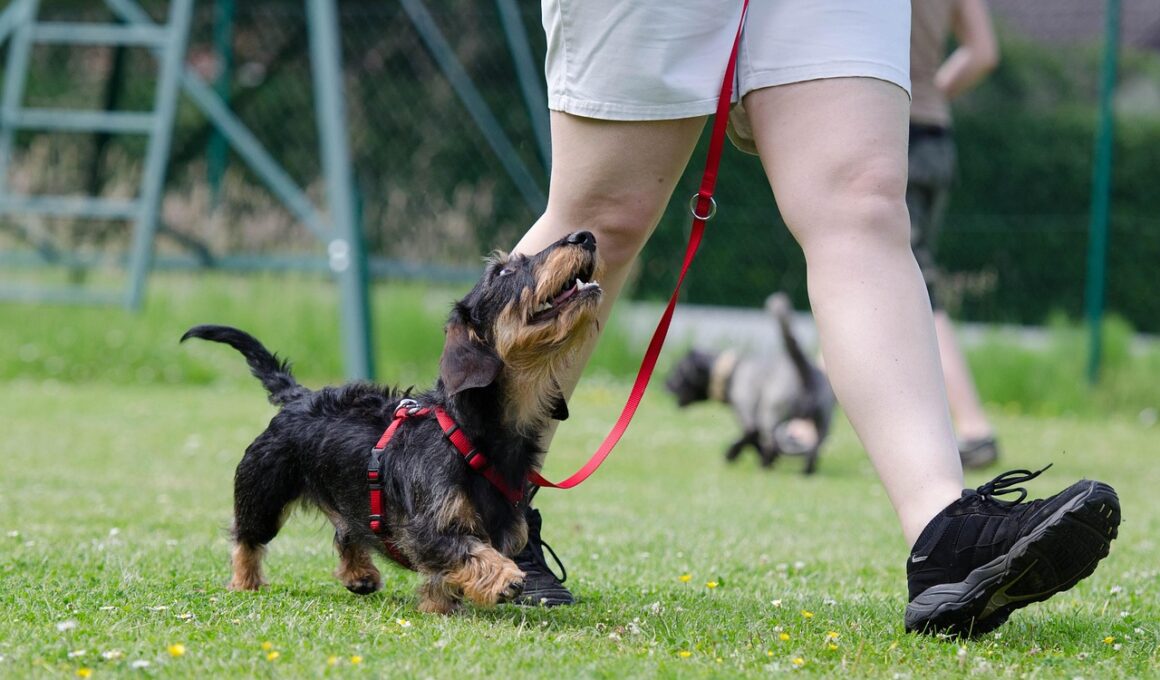Understanding the Intensity Levels on Shock Training Collars
When considering shock training collars for your dog, it’s essential to comprehend the varied intensity levels available. These devices are designed to aid in training by delivering stimulation to help correct behavior. The range of levels can vary greatly among brands and models. Generally, the collars will feature adjustable settings that start from very low, to higher levels meant to grab the dog’s attention without causing pain. Shock collars are not meant for punishment but should be used as guided support. Understanding your dog’s temperament is crucial when choosing the right setting. Start at the lowest level to assess how your dog responds. It helps to observe their reaction closely before increasing the intensity. Each collar has a different range, so familiarize yourself with your specific product. Many trainers recommend using vibration or beep modes as positive reinforcement before resorting to shock. Proper usage can lead to effective training outcomes without adverse effects. When used responsibly, shock collars can enhance communication with your dog while ensuring behavioral consistency.
It’s important to understand that shock training collars are highly controversial tools. Many trainers argue about their ethical implications and efficacy in behavioral modification. Critics claim that these devices can cause anxiety, fear, and lasting trauma if misused. Therefore, it’s critical for pet owners to educate themselves on the correct application of these training tools. Wrong use can undermine the bond between you and your pet. Many suggest using them only under professional guidance. Moreover, trainers highlight the importance of integrating shock collars into a comprehensive training plan that includes positive reinforcement techniques. These collars should not replace obedience classes or consistent training routines. Incorporating various methods creates a more rounded approach that encourages better behavior. The goal is to establish trust and understanding with your dog. Ideally, training should reflect compassion, utilizing all available resources to adapt to your dog’s specific needs. It is beneficial to seek advice from certified trainers who can provide insights on how to utilize shock collars effectively. Therefore, the responsible handling of such devices contributes immensely to your dog’s training success.
Understanding Shock Collar Settings
Shock collars typically feature multiple settings, catering to different behavioral needs. Each setting denotes an intensity level that aims to ensure effective communication between you and your dog. Usually, these settings range from low warnings to higher intensity shocks, making it imperative for those using them to familiarize themselves with the specifics of their collar. Low stimulation is often perceived as a gentle reminder, designed to echo a leash tug or a verbal cue. A gradual increase in intensity helps dogs associate specific commands with the prompt effectively. For high-energy dogs or those with stubborn tendencies, higher settings may be necessary, but caution should always be exercised. When transitioning through levels, keeping a close eye on your dog’s reaction is vital. The right balance guarantees that the training is constructive rather than punitive. Always begin with the lowest setting and observe how your dog reacts. Effective training using shock collars involves patience and understanding. Mastering the various settings allows you to tailor your approach uniquely, creating an environment that is conducive to learning and behavioral improvement.
Choosing the right shock collar entails evaluating your dog’s personality, size, and training experience. It’s a common misconception that size is the only determinant of the appropriate collar. Sensitivity to stimulation varies between individual dogs, and what works for one might not work for another. Small breeds, for instance, require less intensity compared to larger breeds. Hence, the chosen collar must be adjustable to align with these variances. Furthermore, collars should be utilized only under specified conditions, as continuous usage can lead to desensitization or adverse reactions. When selecting a collar, consider consulting professionals who can assist in deciding the right intensity range, preventing potential harm. Resistance training by combining shock collars with alternative training methods can yield positive results. It’s pivotal to maintain the same principles across different training activities for consistency. This understanding fosters an environment of respect and trust, which significantly eases the training process. In the end, your approach should focus on fostering a strong connection between you and your pet, achieving success through informed methods and patience.
Health and Safety Concerns
While shock collars serve as training tools, there are health and safety concerns associated with their use. Dogs have varying degrees of sensitivity to stimulation, and using these devices irresponsibly can lead to detrimental effects. Overexposure to shock can cause anxiety, stress, and aggression, making it crucial that owners understand the implications of each setting. Regular breaks from collar usage are advised to prevent discomfort and ensure your dog’s mental health remains intact. Understanding how stress affects dogs is vital, as they communicate their discomfort through various behaviors. Signs of distress might include whining, excessive barking, or withdrawal. If you notice these signs, reconsider your training approach. Additionally, consult your veterinarian or a professional dog trainer for tailored advice. Always prioritize your pet’s welfare in the training process. Moreover, regular checks for irritation or skin issues where the collar contacts your dog’s neck are essential. If any concerns arise, discontinue use immediately. Keeping open lines of communication with your dog strengthens the training process and solidifies trust.
Incorporating positive reinforcement alongside the use of shock collars enhances the overall training experience. Utilizing treats, praise, and play greatly complements the corrective aspects of shock collars. When your dog associates the collar stimulations with rewards for good behavior, training becomes a more enjoyable experience. Positive reinforcement nurtures your dog’s willingness to learn, paving the way for long-lasting behavioral change. By mixing these methodologies, you not only foster a healthy relationship but also encourage confidence in your dog. The focus should continuously remain on teaching commands using positive cues while reserving the shock levels for only the more difficult scenarios. Adopting this balanced approach clarifies expectations for your dog, enabling them to differentiate between right and wrong behavior. It’s beneficial in establishing a learning environment that feels safe and productive. Investing time and patience into this process fosters an understanding of communication and responsiveness with your dog. Ultimately, the goal is to ensure comprehensive learning that promotes well-rounded behavior while reinforcing your bond as companions.
Conclusion: Responsible Use is Key
In conclusion, responsible and informed use of shock collars ensures that both training and the dog’s wellbeing remain priorities. Understanding the varying intensity levels is imperative for setting boundaries and promoting learning without harming your pet. Owners must educate themselves on their chosen devices, ensuring that they’re not overexposing their pets to unnecessary discomfort. Reflection on your dog’s response and behavior throughout the training process allows for a more tailored approach. Beyond devices, maintaining a close relationship through trust and communication is essential. Ultimately, training methods should adapt to suit individual needs, creating a foundation built on respect and understanding. Engaging the help of professionals can provide valuable insights into effective training strategies. On the journey of training your dog, patience and clear guidelines build a successful partnership. If used appropriately, shock collars can open doors for improved behavior while reinforcing a positive relationship with your pet. Always remember that the ultimate objective is a happy, healthy dog. Taking these measures fosters effective training while maintaining a loving environment.


